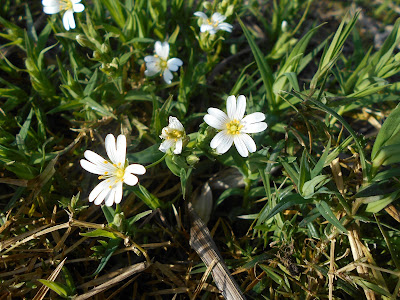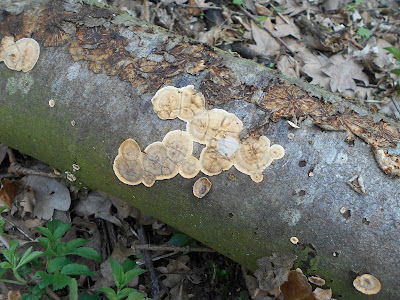With it have come bee-flies by the hundred, all Dark-edged Bee-Flies, although I have just heard from my friend John Showers that the far less common Dotted Bee-fly, Bombylius discolor has now turned up in Northamptonshire. The two species are very similar when in flight so I must keep my eyes open.
 |
| Dark-edged Bee-fly, Bombylius major, in our front garden, Stefen Hill. 24 March, 2019 |
More and more flowers are now coming into bloom including the Snake's Head Fritillary, Fritillaria meleagris. This is almost certainly native to Northamptonshire but a number of recent records certainly refer to deliberate plantings. The generic name comes from the Latin fritillus, a dice-box, and probably refers to the squarish shape of the flowers. As for meleagris, the Guinea Fowl, Numida meleagris, bears similar chequered markings. So we have 'the plant with flowers shaped like a dice box and speckled like a guinea fowl'; occasionally Latin names make things so much simpler!
 |
Snake's Head Fritillaries in our front garden in Stefen Hill.
31 March, 2019
|
Definitely native to Northamptonshire is the Pasque Flower, Pulsatilla vulgaris. The red-flowered form has been in bloom with us for a couple of weeks but the authentic native form has rich purple flowers and they are now open.
 |
The native form of Pasque Flower is also blooming in our front garden.
31 March, 2019
|
Not native, but very well naturalised on walls right across Britain is Yellow Corydalis, Pseudofumaria lutea. Certainly it grows well around Daventry town centre. We do not have it in our garden but instead are growing Pseudofumaria alba. I am not claiming it is a better plant but it is simply of interest because it is less often seen, although I understand that it is naturalised in Harpole.
 |
Looking nothing like a poppy but from the same family, Pale Corydalis
is now flowering with us. 31 March, 2019
|
Despite its oddly-shaped flowers it is a member of the Poppy Family, Papaveraceae. Many members of the poppy family are important medicinally and Corydalis yields tetrahydropalmatine, an alkaloid which has proved to be potent muscle relaxant. My muscles are relaxed enough thank you (too much, according to Chris) and I have no plans to chew a mouthful.














































